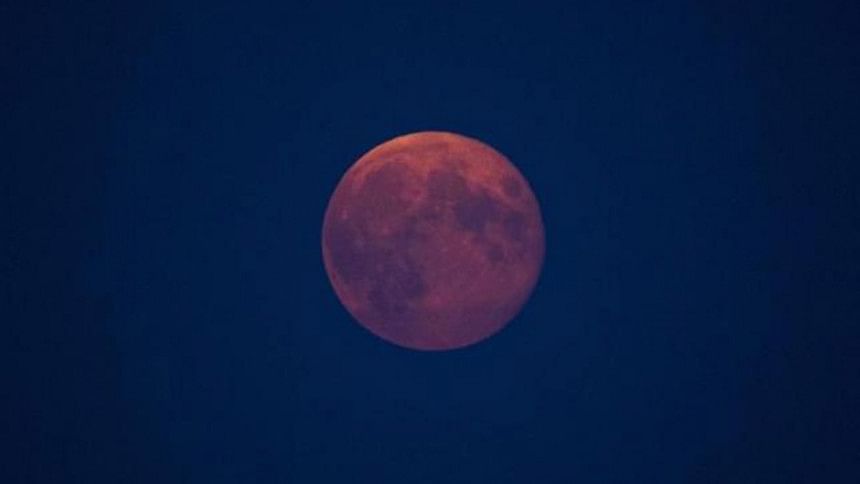Rare 'supermoon' eclipse unfolds tonight

Sky-watchers around the world are in for a treat tonight and tomorrow when the shadow of earth casts a reddish glow on the moon, the result of rare combination of an eclipse with the closest full moon of the year.
The total "supermoon" lunar eclipse, also known as a "blood moon" is one that appears bigger and brighter than usual as it reaches the point in its orbit that is closest to earth.
"There’s no physical difference in the moon. It just appears slightly bigger in the sky," planetary geologist Noah Petro, with Nasa’s Goddard Space Flight Center in Greenbelt, Maryland, said.
If skies are clear, the phenomenon will be visible from North and South America, Europe, Africa and parts of West Asia and the eastern Pacific. In the United States, the eclipse begins at 8:11pm EDT. The total eclipse starts two hours later and lasts for one hour and 12 minutes.
It has been more than 30 years since a supermoon combined with a lunar eclipse, said Nasa. The next total lunar eclipse will not be until 2018. The next supermoon-lunar eclipse combination will not happen until 2033.
For more than an hour Sunday night, earth’s shadow will blanket the full moon as the planet passes between the sun and the moon. The brilliant white glow of the moon will slowly transform into a dim red. The colouring is caused by earth’s atmosphere scattering sunlight into the shadow.
Because the moon is not perfectly round, its distance from earth varies by about 49,900km as it circles around the planet every 27 days.
At its closest point, known as perigee, the moon comes as close as 363,104km from earth. At apogee, the most distant point, the moon is 406,696km away.

 For all latest news, follow The Daily Star's Google News channel.
For all latest news, follow The Daily Star's Google News channel. 



Comments